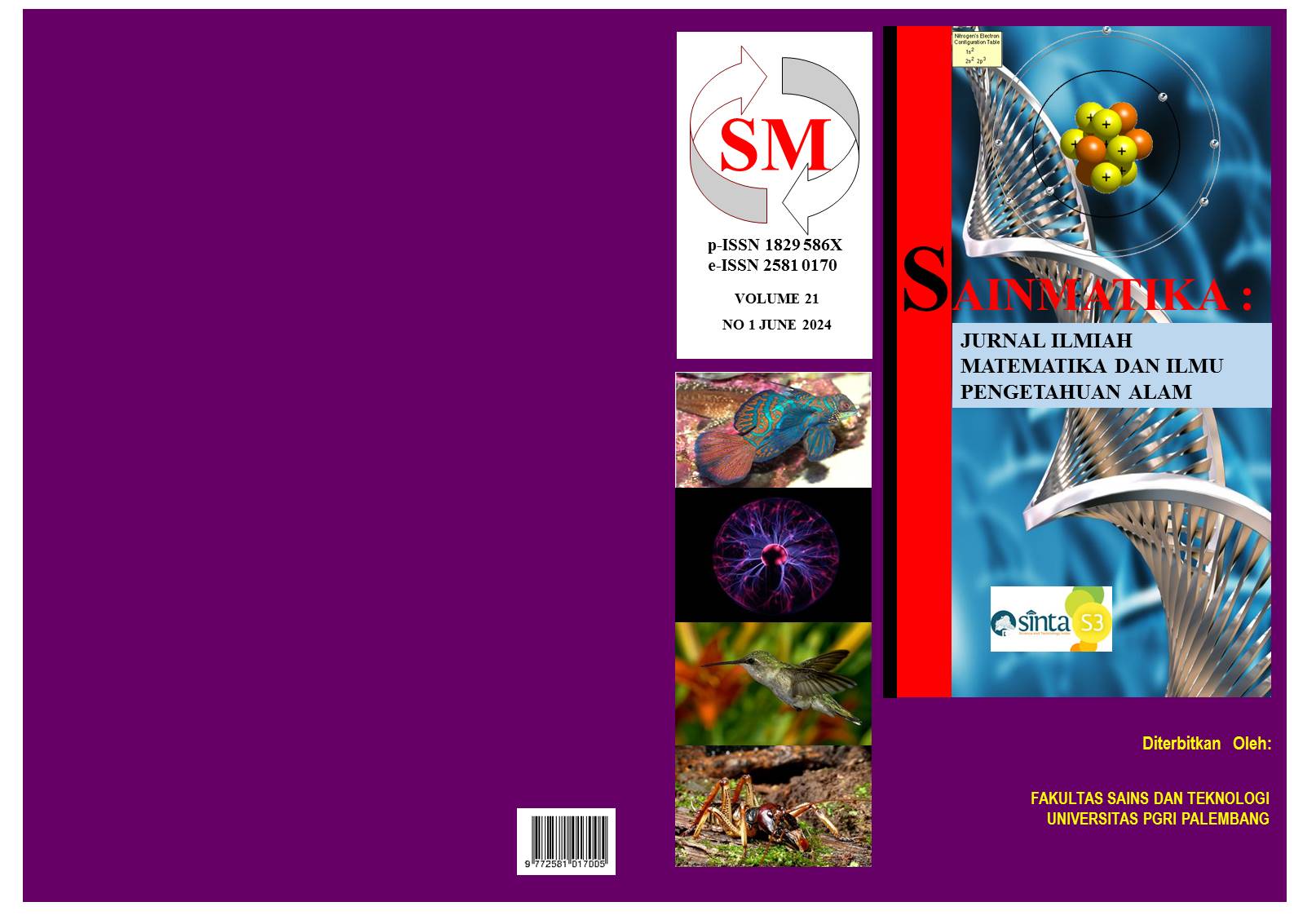Comparison of the Morphological Structure of Pollen in Five Provenances of Gyrinops versteegii (Thymelaeaceae) in Lombok
DOI:
https://doi.org/10.31851/sainmatika.v21i1.14398Keywords:
Morphology, pollen, gaharu, Gyrinops versteegii, LombokAbstract
Gyrinops versteegii (Thymelaeaceae) is one of the agarwood-producing trees originating from Lombok, there are five provenances, namely Pantai, Madu, Buaya, Soyun, and Beringin. This study aims to compare the morphological structure of pollen in five provenances of G. versteegii in Lombok. The method of sampling and data analyzes were used random sampling and descriptive. Samples were taken from West Lombok: Sidemen Village (Pantai), North Lombok: Menggala Village (Buaya), Gangga Village (Beringin), Central Lombok: Taman Baru Village (Madu), and Soyun from Karang Pule Village, Mataram. The study parameters were pollen diameter and pollen morphology: shape, aperture, and sculpture. The results showed that the size of pollen from Buaya was wider than that from Madu, Beringin and Pantai. Based on the length of the polar axis/equatorial diameter, Buaya Provenance, Beringin and Pantai pollen are round in shape, and Madu Provenance is subprolate in shape. The Buaya, Madu and Beringin provenances have a monocolpate opening type, and the Periporate type for the Pantai provenance.
References
Abrori, F. . (2018). Studi Etnobiologi Tumbuhan Penghasil Gaharu Suku Thymelaeaceae Di Daerah Tarakan. Jurnal Borneo. Jurnal Etnobotani Saintek, 1(1), 58–65.
Des, M., Chatri, M., & Mikaf, C. (2013). Studi Morfologi Serbuk Sari Pada Beberapa Varietas Coleus scutellarioides L. Eksakta., 2, 99-106. https://ojs.iainbatusangkar.ac.id/ojs/index.php/sainstek/article/view/89
Erdtman, G. (1943). An Introduction to Pollen Analysis. Chronica Botanica Company,.
FAEGRI, K., & IVERSEN, J. (1989). Textbook of pollen analysis. John Wiley and Sons.
Fakhrizal, T. (2015). Morfologi Serbuk Sari Famili Poacea di Kampus Universitas. Syiah Kuala Banda Aceh. Jurnal Biotik, 3(2), 116–127.
Fitri, R., Des, M. ., & Handayani, D. (2016). Morfologi Serbuk Sari Pada Beberapa Variasi Warna Mahkota Bunga Caesalpinia pulcherrima (L.) Swartz. Eksakta Berkala Ilmiah Bidang MIPA, 2:, 38-43.
Hou, D. (1960). Thymelaeaceae. In Flora Malesiana (pp. 6 (1): 1-46).
Iswantari, W., Mulyaningsih, T., & Muspiah, A. (2017). Karyomorphology and chromosome number of four groups of Gyrinops versteegii (Gilg.) Domke in Lombok. Jurnal Ilmu Kehutanan, 11, 205–211.
Kapp, R. O. (1969). How to know pollen and spores. Dubuque, Iowa, W. C. Brown Co. https://archive.org/details/howtoknowpollens0000kapp/page/n3/mode/2up
Kumaladita, L. (2014). Hubungan Kekerabatan Jenis-Jenis Tumbuhan Anggota Sub Famili Caesalpinioidae di Daerah Istimewa Yogyakarta Berdasarkan Kajian Morfologi Serbuk Sari Sebagai Sumber Belajar Biologi Siswa SMA Kelas X. Jupemasi-PBIO., 1(1), 93–97.
Lopez-Sampson A., & Page T. (2018). History of used and Trade of Agarwood. Economic Botany, 72, 107–129.
Mulyaningsih, T., Marsono, D., & Yamada, I. (2014). Selection of Superior Breeding Infraspecies Gaharu of Gyrinops versteegii (Gilg) Domke. Journal of Agricultural Science and Technology B, 4, 485–492.
Nugroho, S. H. (2014). Karakteristik umum polen dan spora serta aplikasinya. Oseana, 39(3), 7–19.
Pudjoarinto, A., & Hasanudin. (1996). Kedudukan Taksonomi Duku, Kokosan, dan Pisitan: Ditinjau dari Morfologi Serbuk Sari. Jurnal Biologi., 2(1), 1– 10.
Quicke, D. L. J. (1993). Principles and Technique of Contemporary Taxonomy,. SPRINGER-SCIENCE+BUSINESS MEDIA, B.V.
Radford, A. E., Dickison, W. C., Massey, J. M., & Bell, C. R. (1974). Vascular Plant Systematics. Harper & Row, Publishers, Inc. https://archive.org/details/vascularplantsys00radf/page/n11/mode/2up
Sass, J. E. (1958). Botanical Microtechnique,Third Edition. The Iowa State College Press.
Triadiati, Carolina, D. A., & Miftahudin. (2016). Induksi Pembentukan Gaharu Menggunakan Berbagai Media Tanam dan Cendawan Acremonium sp. dan Fusarium sp. Pada Aquilaria crassna. Jurnal Sumberdaya HAYATI, 2(1), 1–6.
Wang, S., Yu, Z., Wang, C., Wu, C., Guo, P., & Wei, J. (2018). Chemical Constituents and Pharmacological Activity of Agarwood and Aquilaria Plants. Molecules, 23(342), 1-21.
Zahrina, Hasanuddin, & Wardiah. (2017). Studi Morfologi Serbuk Sari Enam Anggota Familia Rubiaceae. Jurnal Ilmiah Fakultas Keguruan Dan Ilmu Pendidikan Unsyiah, 2(1), 114–123.

Downloads
Published
Issue
Section
License

This work is licensed under a Creative Commons Attribution-NonCommercial-ShareAlike 4.0 International License.








